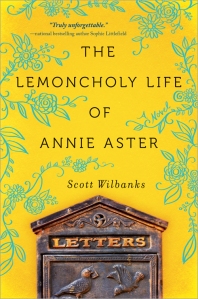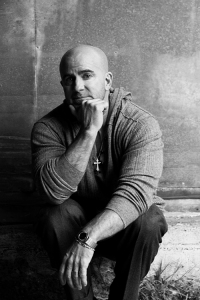 I’m really excited to be part of the blog tour for Scott Wilbanks’ debut novel, The Lemoncholy Life of Annie Aster, a book that is by far one of my favourite new releases this year (you can read my
I’m really excited to be part of the blog tour for Scott Wilbanks’ debut novel, The Lemoncholy Life of Annie Aster, a book that is by far one of my favourite new releases this year (you can read my gushing over it review here).
In this guest post, Scott discusses his “process for writing mystery, historical fiction, and romance”, something which I think lovers and writers of historical fiction will find interesting.
So sit back, relax, and read on. Once you’re done, go read his book – you’ll love it. You can check it out here on Goodreads.
Many thanks to Scott and Sourcebooks for inviting me to take part in the blog tour.
My Writing Process
When I found out that Sourcebooks had offered my “process for writing mystery, historical fiction, and romance” as a potential topic to blog sites, I emailed a panicked message to my critique partner. Jennie, I wrote. What process? I don’t have a process!
After three years of working together, I can say that for certain that you do popped up in my inbox the next morning.
Exasperated that she hadn’t spelled it out for me, I merely typed two question marks in response.
All I got in return for my peevishness was one word. Think.
So I did. And you know what? I do have a process.
I write in ripples.
To understand what I mean, let’s start at the beginning.
When I wrote the very first sentence of my manuscript, I was completely lacking in the craft of writing. It should come as no surprise, then, that my novel didn’t begin with a premise, or even a concept—those terms weren’t even part of my vocabulary at the time. I’m a visual critter, so, instead, it began with an image in my head. Picture two women—one a young, modern day San Francisco eccentric with a penchant for Victorian clothes, and the other a cantankerous, old schoolmarm living in turn-of-the-century Kansas wheat field —pen pals who get off to a rather rocky start, depositing their correspondences in a brass letterbox that stands in some common magical ground between them.
With that image lodged in my head, I plowed ahead full throttle, throwing together a stream-of-consciousness compilation of badly written words in a little over two months—four-hundred-fifty pages in all.
Looking back on it, this was not writing. Not to me. Not in the sense of craft. But if you think visually, like I do, it provided a sketch over which I began the process of “adding color,” or as others call it, revising.
And that’s where the ripples came in.
I’m not a linear thinker, so I can’t write in a straight line, progressing from scene to scene.
Instead, I learned to ask myself questions, the first one being: what if Annie (my protagonist) reads about a murder that took place over a hundred years ago on her time line, yet will take place in three days on Elsbeth’s?
That question was like a pebble dropped in a pond. It was the cause, and the answers I generated were the effect, creating little ripples that radiated outward throughout my manuscript.
When I answered that question to my satisfaction, I simply asked another, dropping another pebble whose ripples expanded from the point of origin while also impacting the ripples created by the prior question.
I kept asking questions with one purpose in mind. How could I raise the stakes for my protagonists? More to the point, what obstacles could I put in their way to trip them up, both within the landscape of their inner journeys and their outer journeys? If a question didn’t challenge them to the breaking point, I discarded it.
I came up with enough questions for my manuscript to look like the surface of a puddle during a spring rain in which the expanding ripples intersected, and crashed over one another.
And here’s the interesting thing. I discovered that there wasn’t a question I asked that didn’t affect every other question, changing its answer, in some small way. My manuscript was becoming layered.
But how does this technique relate to genre writing, you might ask. In the most basic way. For me, at least, genre writing was less about the process, and more about the type of question.
Want to connect with Scott? You can at these places:
Website: scottbwilbanks.com
Facebook: https://www.facebook.com/scott.wilbanks.7
Twitter: @scottbwilbanks


Pingback: Top Ten Tuesday: My Top 10 New Releases of 2015 | bitsnbooks
Pingback: Book Review – ‘The Lemoncholy Life of Annie Aster’ | bitsnbooks
Thank you for taking the time to share this. It’s interesting to see how differently the minds of artists work. Writing is very much like drawing. If you ask ten different people to draw a picture of a house, -you’d probably find that they all have a unique process, eye, medium, and outcome. I look forward to digging into your book soon 🙂
LikeLike
That’s a very cool way to think about your process. Now I’ve gotta read this book to see how that plays out!
LikeLike
Glad you liked, kthrog! Would love to know your thoughts, if you end up reading LEMONCHOLY.
LikeLiked by 1 person